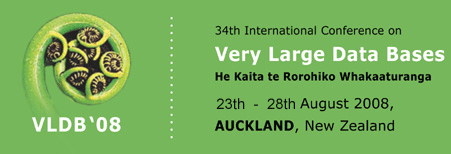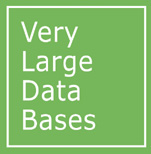

Welcome
PC Chairs message
Keynotes
ProgrammeProceedings
Presentations
Accepted papers
Program committees
Conference officers
Important Dates
Guidelines for Authors
Submission
Workshops
Calls
Sponsorship
Co-located conferences
Registration
Venue
Auckland Airport Transport
Auckland Accommodation
Tourism
Conference Details
Conference video
Contact
Keynotes
Mark D. Hill
Is Transactional Memory an Oxymoron?
Computer Sciences DepartmentUniversity of Wisconsin—Madison
www.cs.wisc.edu/~markhill/
Transactional memory (TM) was invented 15 years ago [1]. Recently, however, TM activity has exploded [2], as the proliferation of multicore chips has provoked researchers to revisit support for parallel programming. Since some regard me as a TM expert, most of my talk will summarize TM’s goals and implementation options, primarily by developing a taxonomy and using Wisconsin LogTM [3, 4] as a case study. In particular, I will consider TM implementations via software, hardware, and hybrids, as well as important design choices, such as how to buffer TM writes and when to detect TM conflicts.
I will conclude with forward-looking comments regarding TM and database transactions. In theory, the two concepts have many similarities. In practice, however, they differ substantially. First, today’s TM exclusively targets concurrency, while database transactions seek reliability first. Second, TM implementations focus in operations with caches and memory, while database transactions deal more with the more substantial access gap between memory and disks. Finally, I will speculate on cross-fertilization opportunities between TM and database transactions. I will not provide answers here, in part because you are the database experts. Nevertheless, I hope to encourage us all to ask the right questions.
Biography
Mark D. Hill is professor in both the Computer Sciences Department and the Electrical and Computer Engineering Department at the University of Wisconsin-Madison, where he also co-leads the Wisconsin Multifacet and LogTM projects. He earned a Ph.D. from the University of California, Berkeley. He is an ACM Fellow and a Fellow of the IEEE. His past work ranges from refining multiprocessor memory consistency models to developing the 3C model of cache behavior (compulsory, capacity, and conflict misses). He is a co-author—with actual database experts—of two VLDB papers [1999 and best paper 2001].Justin Zobel
Principal Research Fellow, NICTAUniversity of Melbourne
www.cs.mu.oz.au/~jz/